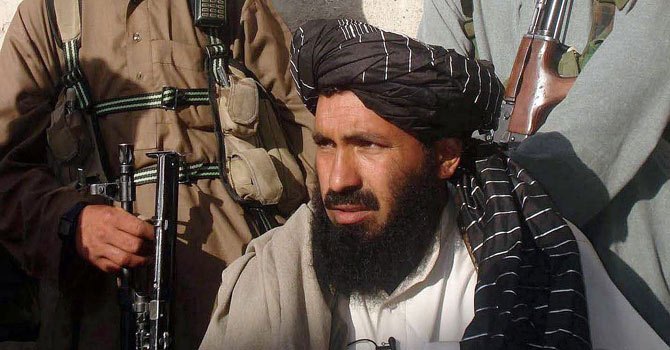See also Pakistan Opinion: The Dangerous Illusion of the Pro-Pakistani Taliban
 Maulvi NazirTalat Farooq writes for EA:
Maulvi NazirTalat Farooq writes for EA:
Last Wednesday night, two US drone strikes killed 13 militants in Pakistan’s tribal agency of South Waziristan. The dead included Maulvi Nazir, a key Taliban commander and the head of a breakaway faction of the Tehrik-e-Taliban (TTP), which is fighting the Pakistani state for being "un-Islamic" and an ally of the US.
Nazir, along with another senior Taliban commander, Hafiz Gul Bahadur, split from the TTP in opposition to its bombing campaign inside Pakistan, instead fighting US and NATO troops in Afghanistan. Nazir agreed to a peace deal with Islamabad in 2007 in a joint bid to counter TTP insurgents. In 2009 he signed a non-aggression pact with the Pakistan army ahead of its military operation in the tribal areas of South Waziristan. Despite this accommodations with Islamabad, Nazir was a target for the US because he was close to the Haqqani network, a faction of the Afghan Taliban blamed for some of the most high-profile attacks in Kabul and elsewhere in the country.
Indeed, Nazir's manoevres posed a challenge to the US-Pakistani partnership. Viewing TTP as its major threat, the Pakistani establishment welcomes in-fighting between different factions, as this distracts the insurgency from violent attacks against Pakistani military and civilian targets. Islamabad would prefer the US to confront the TTP faction under Hakimullah Mehsud, rather than militants like Nazir who do not overtly threaten the Pakistani state. This stance sharply contrast with the Obama Administration’s view of Nazir as an al-Qaeda ally and a staunch supporter of the Afghan Taliban leader, Mullah Mohammad Omar.
According to a retired Pakistani intelligence official, Nazir’s killing has not gone down well with the Islamabad security establishment, as remnants of the Mullah's ffaction may rejoin the TTP and its attacks on the Pakistani government and the military.
There is a counter-narrative, however. Nazir’s killing may reflect improved US-Pakistan military and intelligence ties since October. The following month, Afghanistan's Karzai Government presented a model for reconciliation, requesting Pakistan’s assistance in convincing the Afghan Taliban to participate in the peace process with a view to the NATO and US withdrawal in 2014. The Paris Conference in December brought the first face-to-face talks between the Taliban and the representatives of the Karzai Government and other Afghan stakeholders.
On 7 December, General Ashfaq Pervez Kiyani, the head of Pakistan's armed forces, categorically supported the Afghan peace process at a meeting of top military commanders. Kiyani’s growing support for dialogue may be driven by a realisation that the US is intent on adhering to its plans for withdrawal from Afghanistan. His stance should also be seen against the backdrop of the TTP's domestic terrorist attacks.
It is likely that Pakistan and the US have finally reached some kind of resolution on how to deal with the complex relations between Afghan Taliban, the TTP, and Al Qa'eda on the one hand and between Pakistan, Afghanistan, and the US on the other. For Islamabad, this may have involved agreement on joint operations and continued intelligence sharing vis-s-vis Al Qa'eda and TTP operatives. That has brought US economic and security assistance with the release of $600 million from the Coalition Support Fund and another $200 million for the Bhasha Dam.
The Americans may also be willing to accommodate Pakistan’s reservations about direct military action against the powerful and pro-Pakistan Haqqani group in North Waziristan. Pakistan did not protest Washington's recent terrorist label for the Haqqani network, instead using to push the Haqqani leadership towards negotiations. At the same time, there may be tacit understanding for indirect cooperation over dispensable Taliban militants.
And Maulvi Nazir may have contributed to his end by recent actions antagonising the Pakistani Government. He attacked the polio vaccination drive in South Waziristan in June 2012, claiming that the programme was cover for American intelligence operations, and he demanded an end to drone strikes in the tribal region. Last month, nine workers helping the anti-polio vaccination campaigns were killed by unidentified gunmen, and the slaying of five female teachers and two aid workers have been linked to the dispute over immunisation. These developments followed an insurgent attack on a Pakistani air force base in Peshawar.
Two days after Nazir’s killing, both General Kiyani and Prime Minister Raja Ashraf made statements which appeared to damp down any public tension with Washington --- they said the real threat to Pakistan’s national security is internal and not external.
Nazir's death does not seem to set off an immediate crisis in relations between Washington and Islamabad. Still, it is a reminder of the fragility of those relations amid the complexity of the Afghan issue, the murkiness of insurgency and counter-insurgency, and the inherent contradictions in the so-called Pakistan-US "alliance against terrorism".